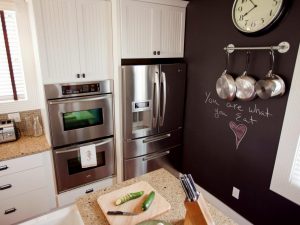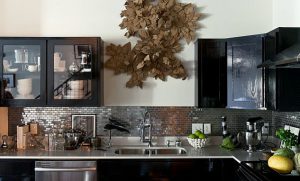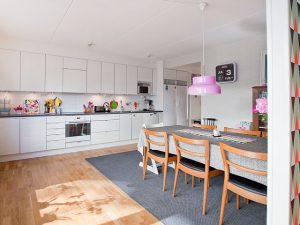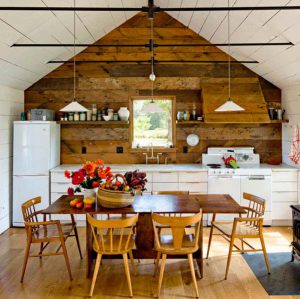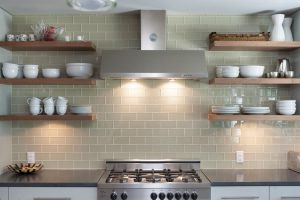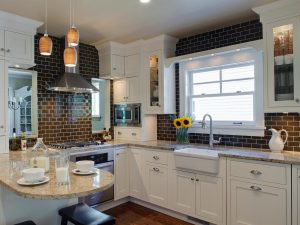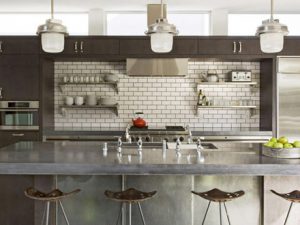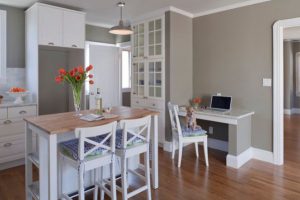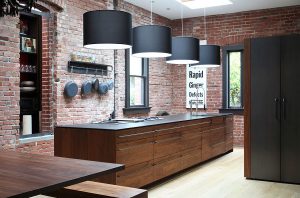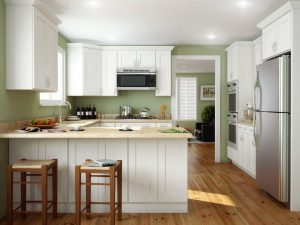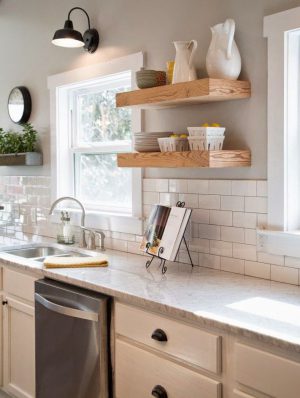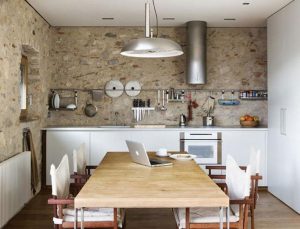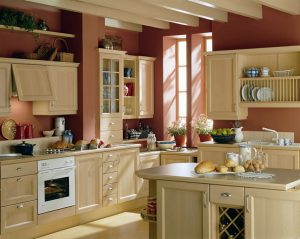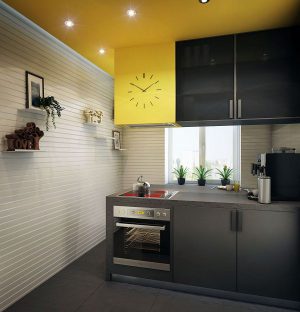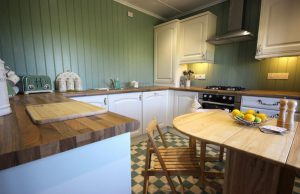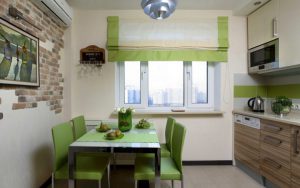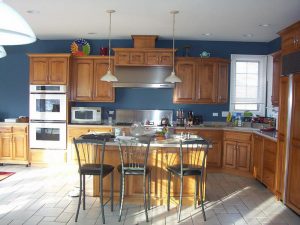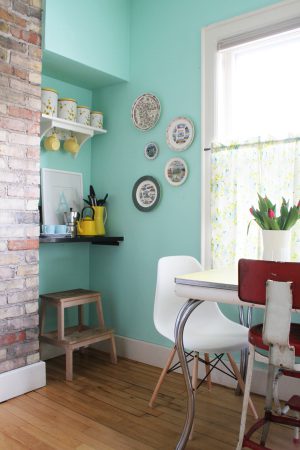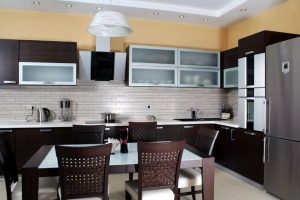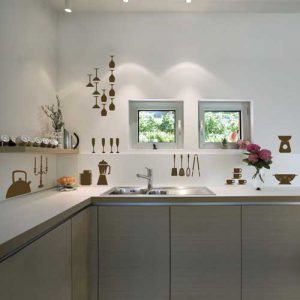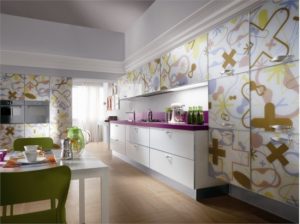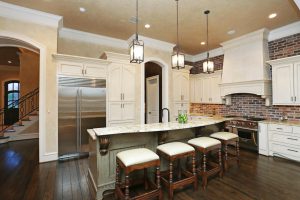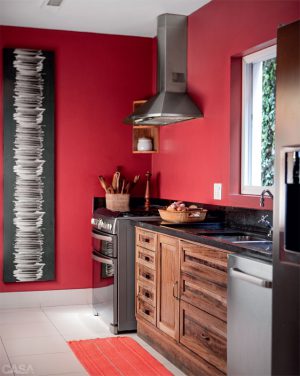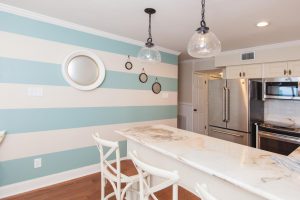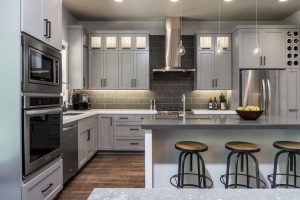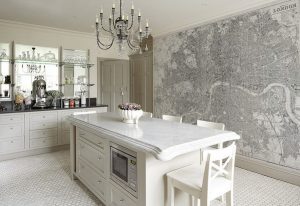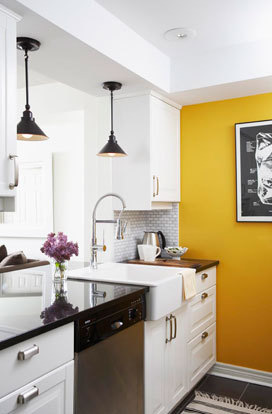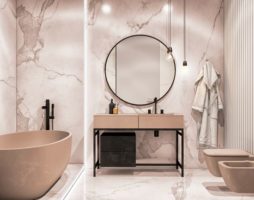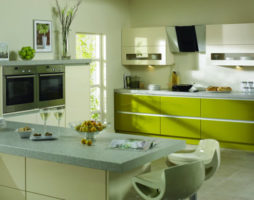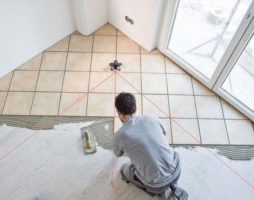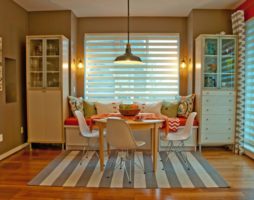The kitchen has always been, is and will be one of the most popular places in the apartment, therefore, two requirements are imposed on it: convenience for the hostess and its external attractiveness for guests.
- How to choose the color of the walls in the kitchen
- Materials for wall decoration in the kitchen
- Ceramic tiles for wall decoration in the kitchen
- Painting the walls in the kitchen
- Wallpaper in the kitchen
- Use of decorative plaster in the kitchen
- The use of panels for cladding
- Decorative rock
- The use of glass and metal in kitchen design
- The use of brickwork during the decoration of the kitchen
- What to use for finishing the apron
- Conclusion
- Photo gallery - wall decoration in the kitchen
- Video
Moreover, this is achieved through the most effective solutions for the capacity of lockers, the choice of the color of the curtains, the functionality of the equipment, etc. However, do not forget that the kitchen is characterized by high levels of humidity, frequent temperature changes and the appearance of pollution.
Based on this, the process of finishing the walls in the kitchen is represented by the following steps:
- Zoning.
- Selecting the desired style.
- The choice of seats sockets.
- Wall alignment.
- The choice of finishing materials.
- Directly by the finishing process.
- The choice of materials for the kitchen apron.
- Installation of lighting fixtures.
- Arrangement of appliances and furniture.
How to choose the color of the walls in the kitchen
“The decoration of the walls in the kitchen must be done beautifully and carefully - so that all elements are in harmony with each other”
The kitchen room should be distinguished by a carefully selected color of materials. Any mistake can lead to the fact that being in the kitchen will not be very comfortable, and eating will be accompanied by constant inconvenience. Therefore, the decoration of the walls in the kitchen must be done beautifully and carefully - so that all the elements are in harmony with each other.

Wall decoration should be in harmony with the interior of the kitchen
Considering that kitchen spaces are very often made using a huge amount of appliances and furniture, their walls can be painted in blue, gray, green, lemon, apricot, pink or peach.

Bright lemon-colored kitchen wall decoration
Materials for wall decoration in the kitchen
It looks quite obvious that the process of choosing finishing materials depends on the style in which the interior will be decorated, as well as how the zoning of the room will be carried out.
However, functional features, as well as an unusual microclimate, lead to certain nuances when choosing finishing materials:
- they must be resistant to high levels of humidity;
- maintain appearance, exposed to high temperatures;
- be easy to care for;
- be hygienic.

Wall decoration in the kitchen should be easy to maintain
Ceramic tiles for wall decoration in the kitchen
Very often, during the decoration of kitchen walls, ceramic tiles or mosaics are used. And during the design of the kitchen apron, you can’t do without it at all.

Wall decoration in the kitchen with ceramic tiles
Such popularity of tiles is due to its certain technological and decorative characteristics:
- long service life;
- good tolerance to elevated temperatures;
moisture resistance; - ease of care;
- various texture and color schemes;
- compatibility with other finishing materials.
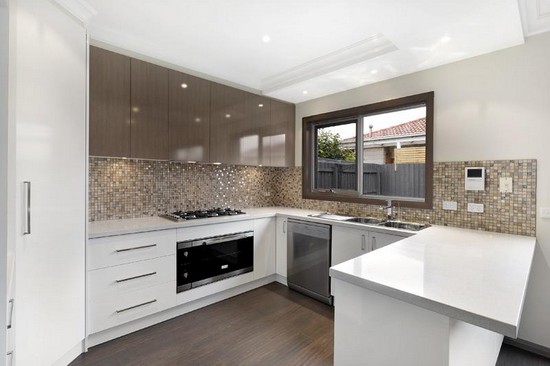
Ceramic tiles tolerate high humidity well
However, very rarely there are cases when ceramic tiles are used to cover the entire surface of the walls. In most cases, modern design projects involve the use of this facing material during the finishing of an apron or a kitchen wall adjacent to the work area. It is also allowed to use it during the design of the working area.

Finishing the kitchen apron with ceramic tiles
Painting the walls in the kitchen
Moisture-resistant and washable paints can be used in kitchen areas. If we talk about the color palette, then it is very diverse. Most often, the use of different shades of the same tone is typical for cases where zonal separation of the kitchen is necessary. However, radically opposite colors can also be used for this.

To paint the walls in the kitchen, choose a moisture-resistant paint
When choosing a paint color, you need to take into account that the use of cold colors, which include green and blue, as well as their shades and combinations, leads to a decrease in appetite. But red and orange colors will only awaken the feeling of hunger.
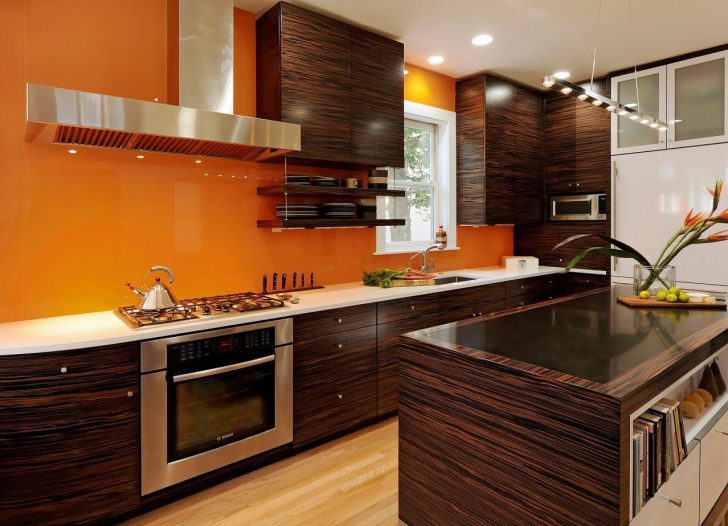
Orange wall decoration in the kitchen
In addition, the color of the paint must be chosen and based on the range of facades. The bright colors of the furniture set indicate that the wall decoration in the kitchen should be done using a light, neutral palette, and vice versa.
If you have a choice: glossy or matte paint, then you need to know that a slight sheen of the surface will only decorate it, in addition, such a surface will be easy to clean and it will not collect dust.
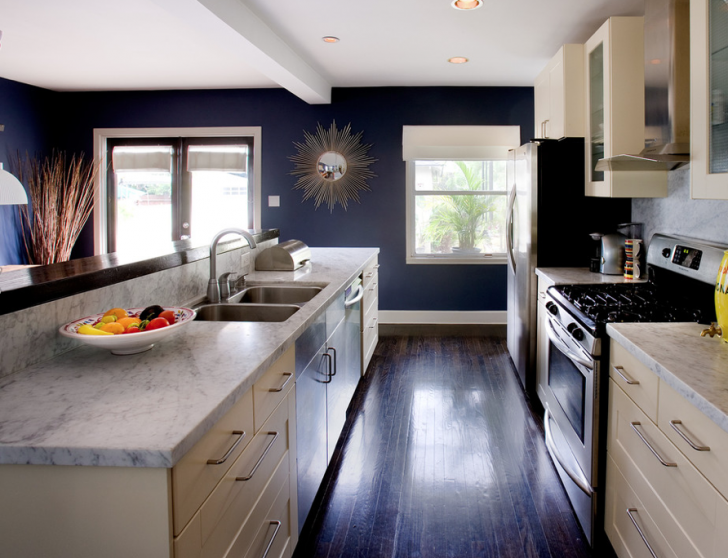
Finishing the walls in the kitchen with matte paint
At the same time, a similar color of the walls will emphasize all their irregularities. If your wall is not perfectly flat, then it is recommended to use semi-matte and matte paints.
back to index ↑Wallpaper in the kitchen
If the wallpaper is beautiful and harmoniously selected, then it can serve as a decoration for any interior, and the kitchen is no exception. However, a careful choice of the material from which the wallpaper will be made is required, since it must withstand all the loads that it will undergo in the kitchen. It is quite logical that using simple paper wallpapers in the kitchen is not the best solution. According to experts, vinyl, non-woven and fiberglass wallpapers can be used in the kitchen.
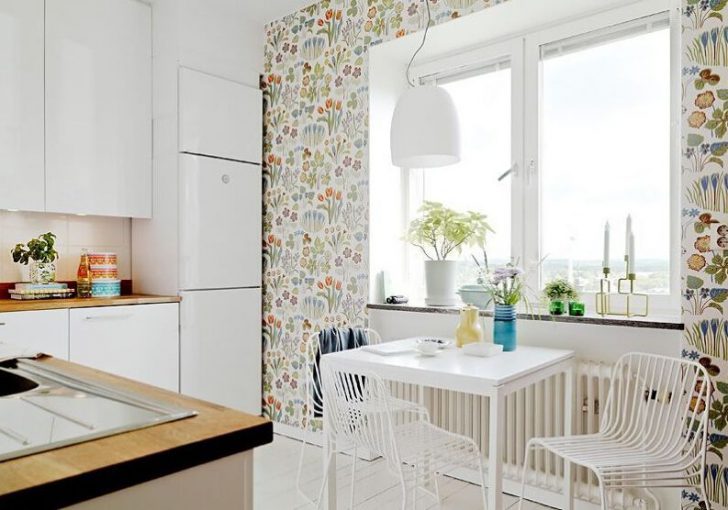
For wall decoration in the kitchen, give preference to washable wallpaper
In the manufacturing process of vinyl wallpapers, their top layer is formed from PVC, which provides protection to the walls. This type of wallpaper is characterized by high strength characteristics and a long operational period. In addition, it is necessary to note the existence of two more subspecies of vinyl wallpaper: one of them is based on foamed vinyl, and hot stamping is used in the manufacturing process of the second. Foamed vinyl is characterized by a dense texture, and it can be used to hide the nuances of the surface.
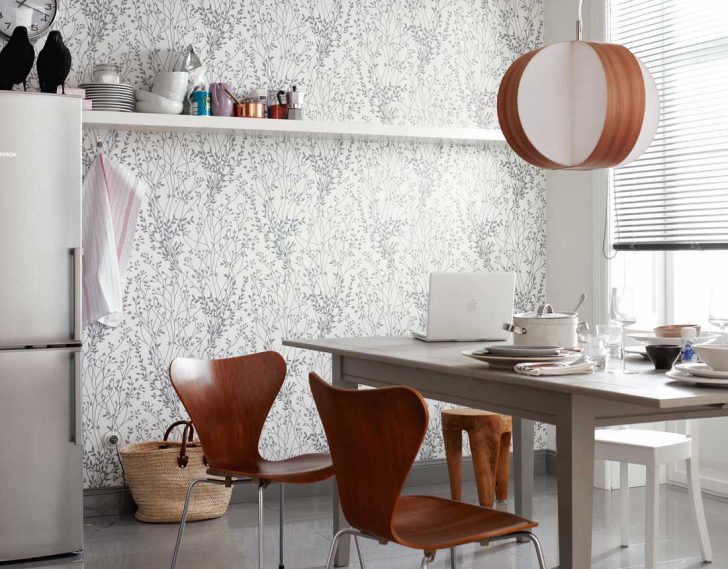
Wall decoration in the kitchen with vinyl wallpaper
Using embossed wallpaper, you can imitate various materials - from stone and brickwork to leather. The walls of the dining area in the kitchen can be finished using any kind of vinyl wallpaper, but the working segment should be pasted over exclusively with chemically embossed wallpaper.After all, only he is strong enough, and can endure exposure to cleaning products.
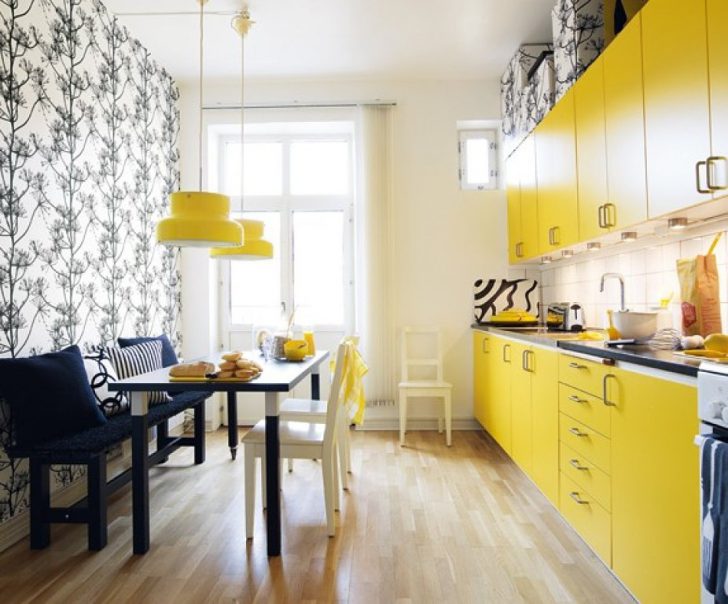
Highlighting the dining area with wallpaper
Technological properties of non-woven wallpaper are very similar to vinyl. However, if in the case of vinyl wallpaper the base is paper, then in this case it is non-woven. Our country is characterized by the popularity of non-woven wallpaper with further coloring, which helps to qualitatively hide all the irregularities of the walls.
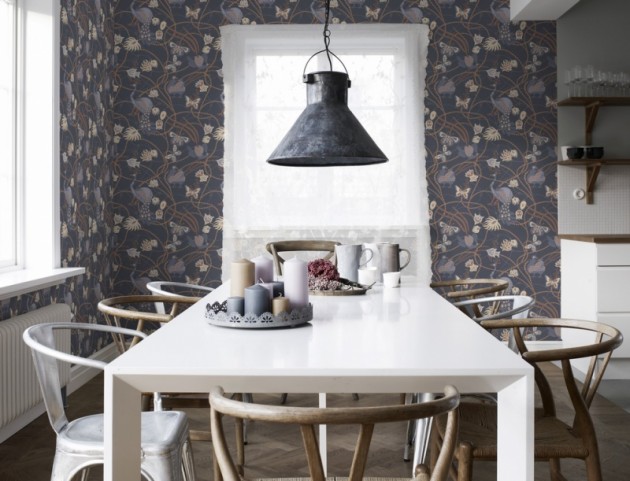
Wall decoration in the kitchen with non-woven wallpaper
A very high level of strength is typical for fiberglass wallpapers, during the manufacture of which fiberglass is used. Such wallpapers are also most often painted after gluing.
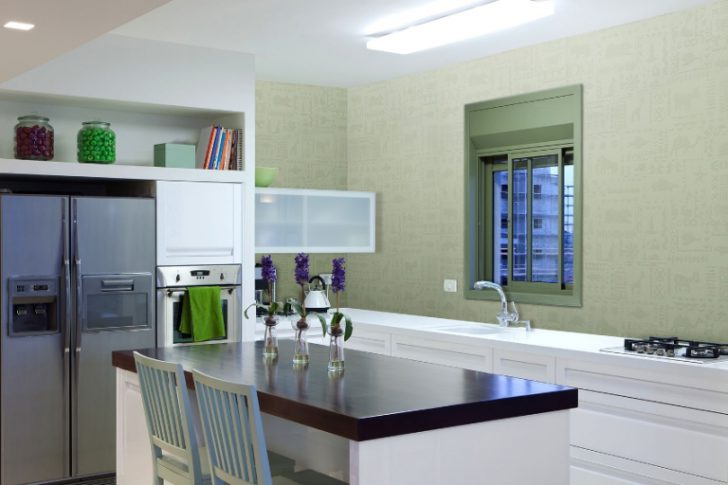
Fiberglass wallpapers have increased strength
Use of decorative plaster in the kitchen
Decorative plaster is represented by various finishing mixtures, the composition of which is distinguished by the presence of composite and binders - the smallest fractions of natural stones, cotton or linen fibers. A huge variety of solutions in color and texture allows you to embody the most daring fantasies associated with wall decoration in the kitchen.
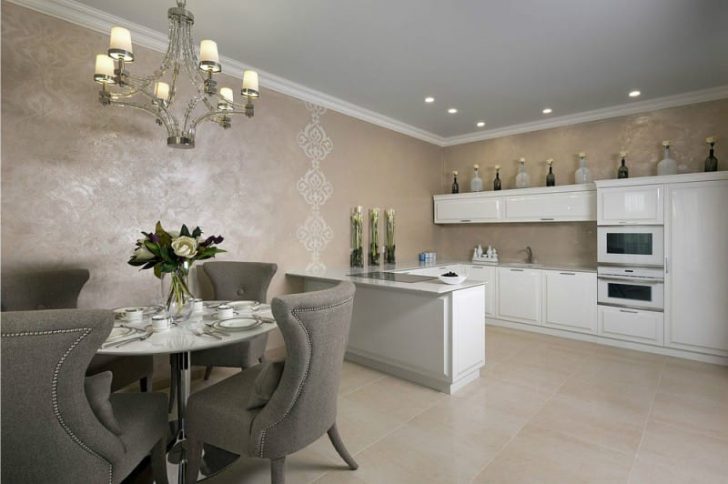
Wall decoration in the kitchen with decorative plaster
The highest level of strength, the duration of the operational period and the originality of the appearance are typical for composite mixtures, which include stone chips. Given the tendency of the kitchen to a high level of pollution, silicate varieties of decorative plaster can also be used here.
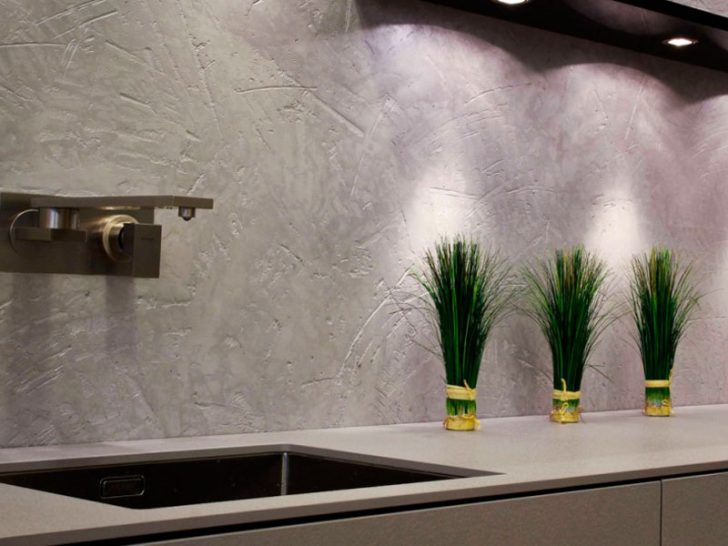
Silicate plaster has a long service life
It is allowed to conditionally separate all types of plaster into mixtures with an aqueous and anhydrous base. The kitchen space is best finished using water mixtures, which are characterized by the absence of various chemical odors.
back to index ↑The use of panels for cladding
The material under consideration is not afraid of moisture, fungus, mold, or temperature fluctuations. The market for plastic panels is represented by a huge number of models that differ in color and texture - there are a huge number of wall decoration options in the kitchen. It should be noted that there are even mirror panels, but they are unlikely to be suitable for the kitchen space due to the fear of contact with water.
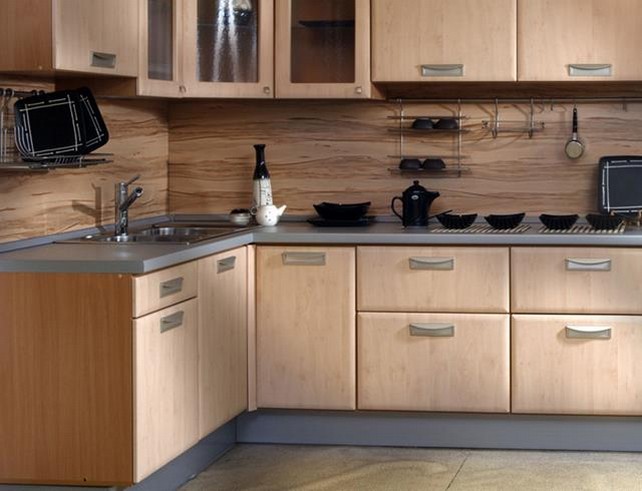
Wall decoration in the kitchen with plastic panels
It is better to give preference to moisture-resistant finishing panels, which are represented by four types on the market:
- Natural wood panels, which are veneered with natural veneer.
- Panels with laminated surface.
- Plastic panels.
- Panels based on PVC, MDF or fiberboard.
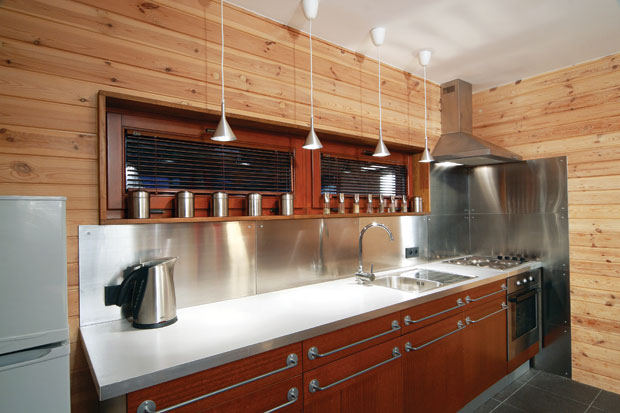
Wall decoration in the kitchen with wood panels
Decorative rock
Designers around the world, incl. and Russian, often use decorative stones when decorating the walls of various rooms, and the kitchen is no exception to this list. To put it simply, the production of decorative stone requires sand, concrete, clay and gypsum.
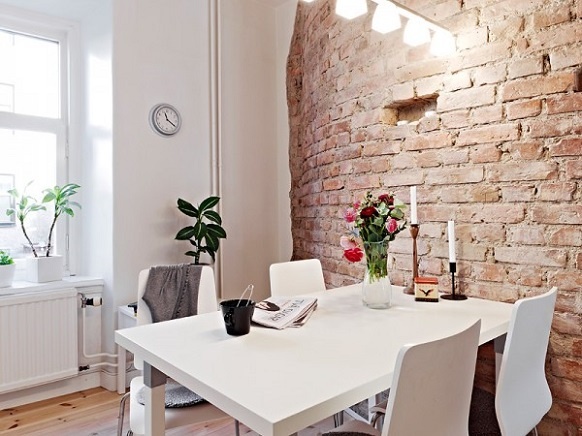
Wall decoration in the kitchen with artificial stone
With the help of artificial material, it is possible to imitate various natural stones, however, artificial stone will have numerous advantages:
- light weight in comparison with natural, as a result of which the process of transportation and installation is greatly facilitated;
- high strength and service life;
environmental friendliness; - does not form mold, fungal bacteria, etc.;
very easy to care for.
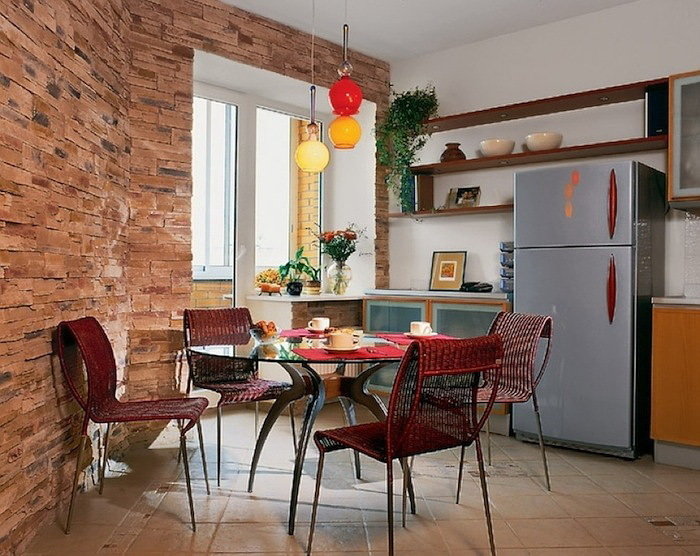
Artificial stone has high strength
If during the lining of the kitchen room your choice fell on a decorative stone, you must take into account the increased humidity of such a room, and choose a material that has water-repellent characteristics.Otherwise, you will face the need for additional costs associated with coating the surface with special compounds.
Decorative stone can be used to cover all walls in the kitchen only if its space is spacious enough and you have chosen a specific color palette. If such a decision is made for a small kitchen, then visually its space will decrease even more. For artificial stone, it is most typical to use it during the decoration of accent walls.
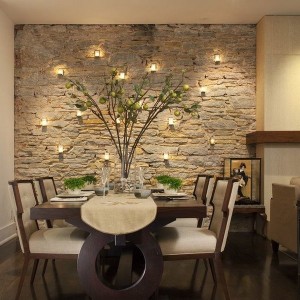
Accent wall highlighting with artificial stone
The use of glass and metal in kitchen design
“Due to moisture resistance, resistance to temperature changes, resistance to chemical cleaners, grease and steam, glass and stainless steel plates will be an excellent option for wall decoration in the kitchen work area”
Given that glass and metal are not only specific, but also rather expensive materials, they are characterized by dosed use during the lining of the kitchen surface. Due to moisture resistance, resistance to temperature changes, chemical cleaners, grease and steam, glass and stainless steel plates are an excellent option for wall decoration in the kitchen work area.
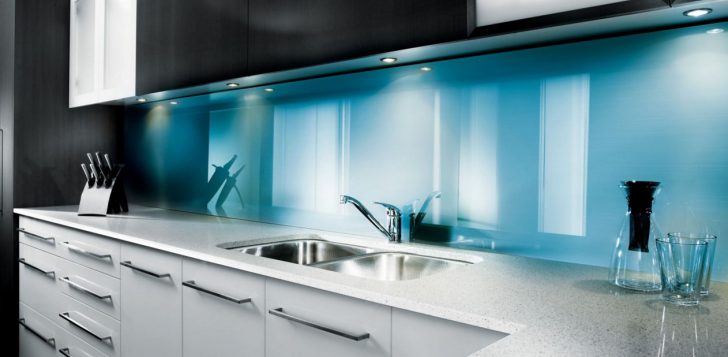
Finishing the working area in the kitchen with glass
The appearance of stainless steel will also be quite modern during its use for lining the apron. It is also characterized by a harmonious combination with chrome elements of the equipment used in the kitchen. In addition, such details will become simply indispensable during the arrangement of the kitchen in a modern or high-tech style. They provide a high level of protection for the most loaded sectors - sink and hob.
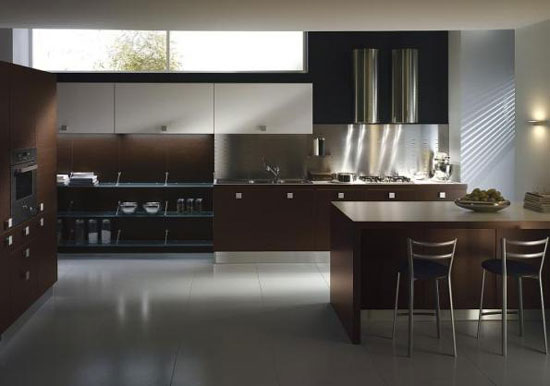
Finishing the metal work area is suitable for a high-tech kitchen
However, it must be taken into account that the apron, during the finishing of which stainless steel was used, will perfectly show any contamination, even the slightest.
As for tempered glass, it can be exposed to the highest temperatures, it is easy to maintain, and various color variations are allowed. If glass tiles are used in the process of lining the apron, then photo printing can be applied to them. A good option would be glass wall decoration in the kitchen to form a color accent. In addition, the use of glass surfaces with a slight glossy sheen can visually increase the free space.
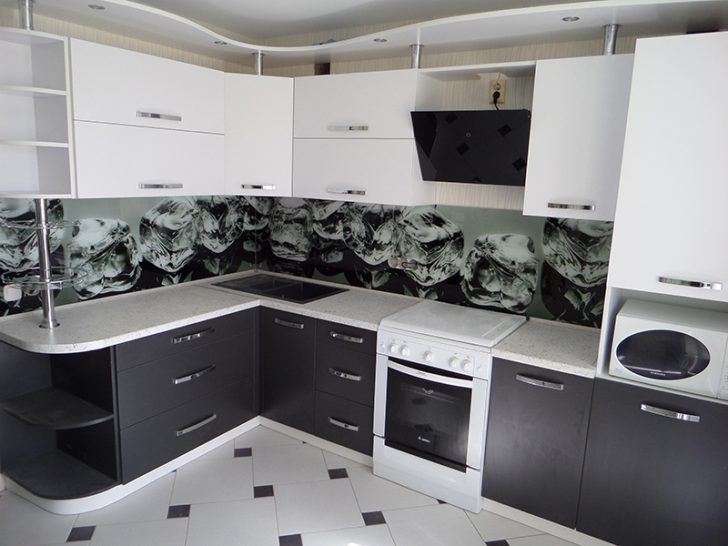
Finishing the apron with glass with photo printing
The use of brickwork during the decoration of the kitchen
Currently, brick walls can increasingly be found in rooms with different functional loads and stylistic directions. Brickwork can be used as a wall decoration option based on several methods - wall panels or special wallpapers can be used.
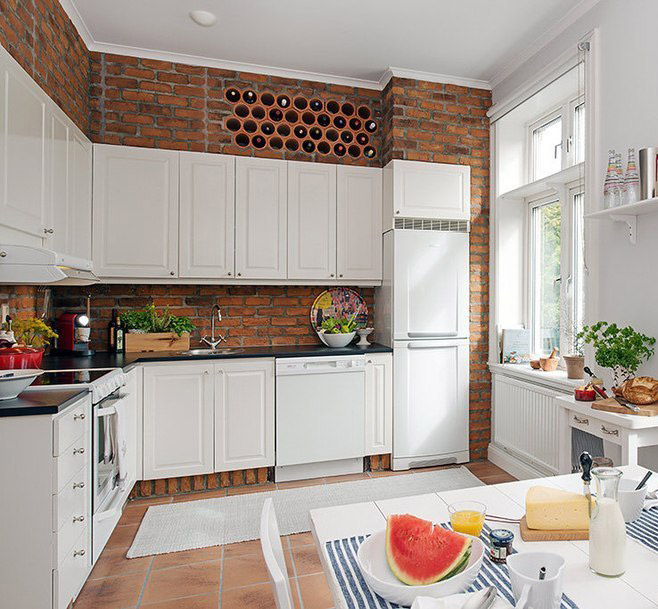
Wall decoration in the kitchen with brickwork
However, the simplest in practice is the method in which an ordinary brick wall is simply not covered with plaster. It is quite logical that sprays and varnishes should be used to process bricks, with the help of which a protective layer will be formed that resists moisture and grease drops.
However, the disadvantage of this option for finishing the walls in the kitchen is that it can be used exclusively for large rooms or for loft-style apartments.
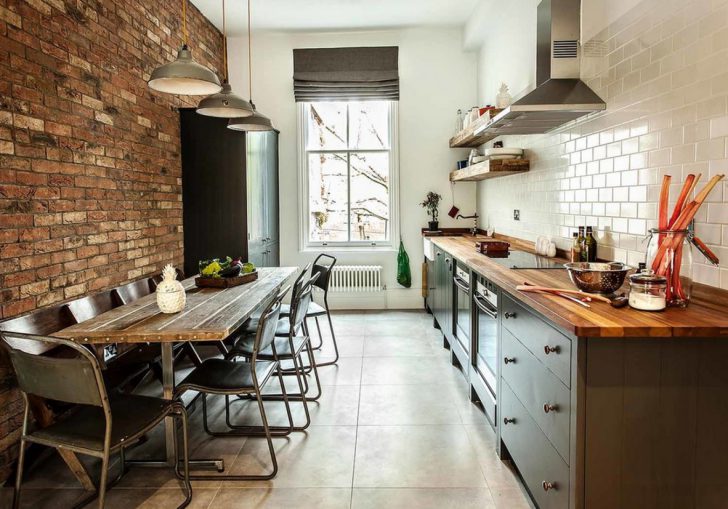
Wall decoration in the kitchen in the loft style
Most often, brick is assigned the role of a textured or color accent. To combine this type of design, you can use painting or pasting the surface with plain wallpaper.
back to index ↑What to use for finishing the apron
An apron is usually called a place located in the kitchen between the hanging cabinets and the work surface. Due to the specific location, it needs very high quality finishing materials. This area can get hot, get hot grease, vapors, and is also subjected to regular mechanical cleaning.
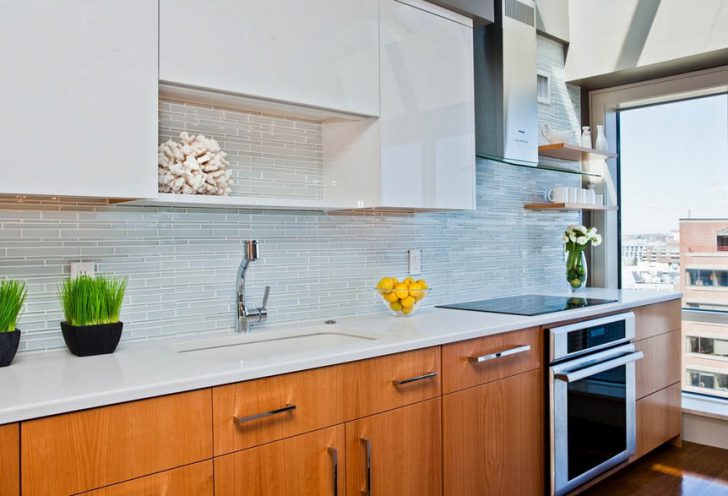
Finishing the kitchen apron
Experts believe that it is preferable to finish the apron:
- Tile or mosaic. Tiles are used to lay out the entire space or its local zones. The height on the wall should be covered with a small margin, which will avoid the appearance of gaps in which dirt and germs will accumulate. To make the apron easy to maintain, the tile must be smooth. For the treatment of tile joints, a protective varnish or smooth grout is used.
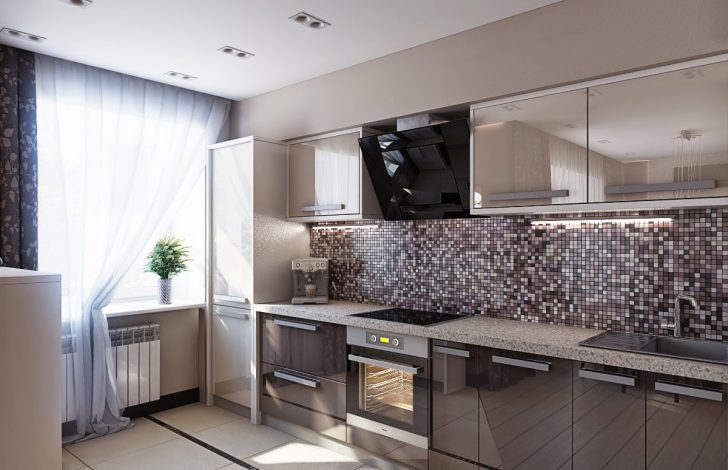
Mosaic kitchen apron
- Decorative plaster, the advantages of which can be found above. It is only necessary to say that the plastering of the apron with the help of a wear-resistant composition will make it a rather stylish detail of the kitchen interior.
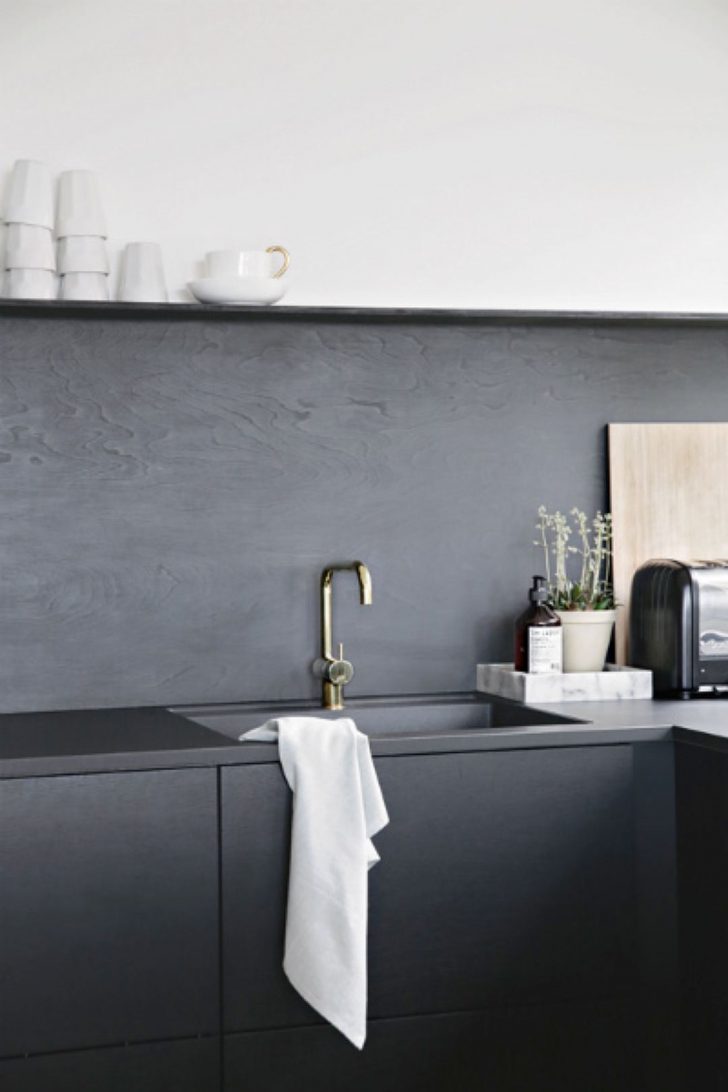
Finishing the apron with decorative plaster
- glass. The tempered glass panels are more than 6mm thick, resulting in good impact resistance. A special technology is used for painting glass aprons. In addition, the image of any paintings on it can be carried out by means of photo printing. To fix the panels, canopies screwed to the wall are used, which is much more profitable than supplementing the glass with mounting holes. However, not only strength is the main advantage of glass aprons, they are distinguished by good thermal resistance, environmental friendliness, and low abrasion.
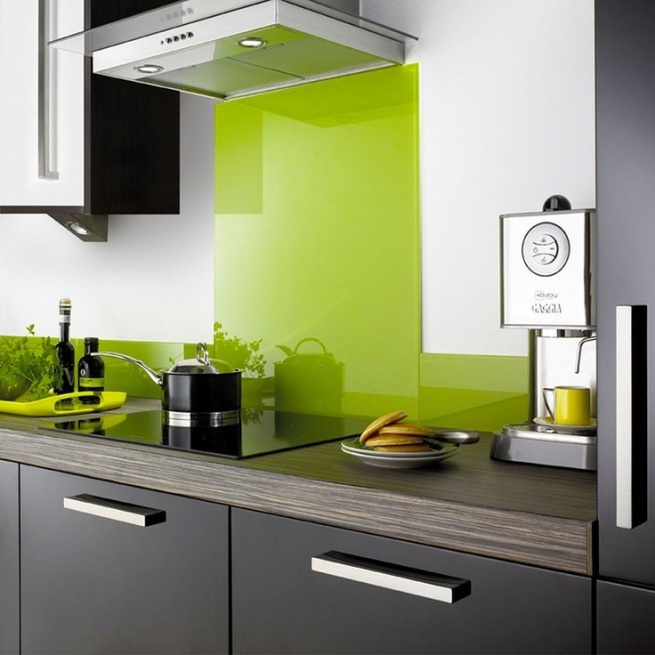
Finishing the apron in the kitchen with glass
- Laminated panel made of MDF or chipboard. For coatings, in the manufacturing process of which synthetic resin was used, high strength, low abrasion, heat resistance, and, of course, affordable price are characteristic. Of the minuses, it should be noted weak moisture resistance.
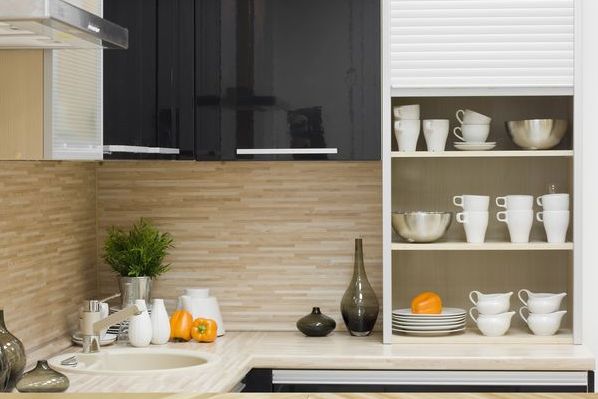
Finishing the kitchen apron with MDF panels
Conclusion
Due to the variety of facing materials, there are many interesting and original options for wall decoration in the kitchen. The choice of a specific solution depends on the size of the room, its interior and, of course, your imagination.



